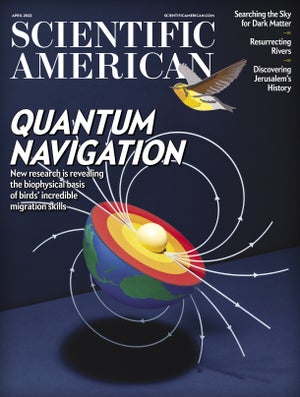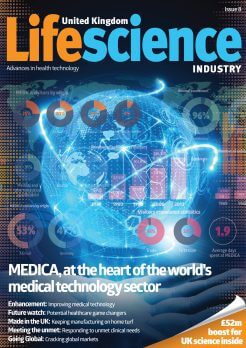Biochemistry & Molecular Biology
Your Conclusions Are Only As Good As The Sources You Use
Not all sources are created equal! Information is plentiful, and anyone on the Internet can make any claim. Therefore, it is important to check your sources -- because your conclusions are only as good as the sources you use! Your experimental design is only as good as the data you build it on!
Happily, there are strategies to help you determine if a piece of information you are reading is credible and reliable.
Know Your Resource Types
Information will come to you in a variety of formats. Different types of resources have different authority and credibility cues. It is important to know the differences between resource types so that you can make good decisions about which ones to trust and use in your own work.
Check out this beautifully done Infographic (with contextualizing data visualizations!) on some important differences between resource types, such as how much scrutiny they receive before publication, or how long they take to publish.
More detail and more types of sources are described in this table comparing the characteristics, both visible and hidden, of several different resource types:
| Resource Type | E.g. | Content | Authority | Audience | Uses | Scrutiny | Find Them |
|---|---|---|---|---|---|---|---|
| Scholarly Journals, Conference Proceedings* |
 |
Original research conducted by experts in a field;meta-analyses/review articles. Content is advanced and technical |
Peer-reviewed, author's credentials, edited by experts in the field |
Scholars, academics, professionals in a field. |
Primary research; present research findings, conduct research on a topic |
Months;
|
Library databases |
| Trade Magazines* |
Industry developments, news, and standards |
Author’s credentials, affiliation of the publisher |
Professionals working in a field |
Identify trends and stay current in a field |
Weeks;
|
Library databases
|
|
| Reference Books* (Encyclopedias, Wikipedia) |
 |
Historical and/or technical overview information on a topic |
Author’s credentials, publisher’s credentials |
Everyone |
Gather background information, topical overviews |
Years; 3-5 reviewers† |
Library databases |
| Reports* (Government, Industry, NGOs) |
 |
Summaries of research initiatives or public policy issues; recommendations |
Author’s credentials, gov’t or industry affiliation |
Professionals and public officials |
Inform development of public policy |
Months; |
Government databases |
| Newspapers* |  |
News and opinion on current and local/regional events |
Written and edited by professional journalists |
General public |
Follow development of issues, link to other sources, gather background information |
Hours - Days; |
Library databases |
| Popular Magazines* |  |
Common interest stories and issues, commentary |
Author’s credentials, affiliation of the publisher |
General public |
Identify popular opinion and trending topics |
Hours - Days; 1 – 2 reviewers† |
Internet, print magazines |
| Social Media |  |
Shared information, opinion |
None | Everyone |
Social engagement, information sharing |
Seconds; |
Internet, apps |
| Data Repositories |
|
Individual or scientific research data or publicly-funded data |
Variable |
Researchers, professionals, general public |
Verify or build on studies, develop tools, share projects |
Variable |
- ICPSR |
*Accessible through the Libraries †from Know Your Sources, Portland Community College
Lateral Reading with SIFT
A study has shown that factcheckers are REALLY GOOD at determining credibility from clickbait. How do they do it?
When looking at resources online, such as blogs or videos or news articles, use lateral reading to quickly establish if the source is credible and accurate.

The four moves of SIFT are essentially about RECONTEXTUALIZING what you read online. In doing so, you give yourself enough information to absorb digital content effectively and make informed decisions.
- Stop: Do you know the resource or the website it came from? If you aren't familiar with a source and its reputation, this is your cue stop reading and start investigating. Don't share or use a story, until you've learned more about it.
- Investigate the source: Know what you are reading before you read it. Knowing who is writing the work and why they are writing it is critical to your ability to interpret it. Take 60 seconds to determine where the source is coming from before reading further.
- Find Better Coverage: The claim being made is often important than the specific article or video you are using. To verify the claim, step outside of the story you found and look for additional, trusted reporting about the claim from another source(s).
- Trace Claims, Quotes, and Media: Very often information online is taken out of context. Find the original source of any claims, quotes, and media for their original context.
Source: SIFT (The Four Moves), by Mike Caulfield. June 19, 2019.
SCARAB Source Evaluation Rubric
Most sources you're going to be using as researchers are scholarly, peer-reviewed articles. You've had experience with scientific articles, you know that they're different from other types of articles out there - and the table above has laid out many checkable characteristics if you need reminders. But how does applying SIFT to an academic article work?
Here is a rubric for aspects to investigate: Substance, Currency, Authority, Relevance, Accuracy, and Bias (SCARAB).
How does the source you're evaluating rank?
Rubric from the McHenry County College Library Education Research Guide: Evaluating Sources/SCARAB: https://libguides.mchenry.edu/edu/evaluating
-
SCARAB Source Evaluation RubricThe SCARAB Rubric is a tool that helps you determine if you have a scholarly source. It is also a reminder for aspects of a source to Investigate when performing SIFT.
Evaluating Resources Video and Interactive Tutorials
For a deeper dive on evaluating sources and detecting misinformation, below are a selection of brief videos and interactive tutorials that discuss strategies for evaluating resources. Check them out!
Fact-checking resources
These sources can help you verify the truth or falsity of specific claims.
-
SnopesSnopes began in 1994 examining urban legends, but has expanded to general fact-checking.
-
Media Bias / Fact CheckA site that examines bias in media from all points of the political spectrum. It includes a "Daily Source Bias Check" that examines the truthfulness and bias of various news sources.
-
Fact CheckA non-partisan site that focuses on political claims.
-
PolitifactA site that rates the accuracy of claims made by U.S. politicians with the Truth-o-Meter.
-
Lead StoriesFact-checks stories that are trending.
-
False, Misleading, Clickbait-y, and/or Satirical 'News' SourcesTips and tricks for spotting questionable news sites. The list is maintained by Melissa Zimdars, assistant professor of Communications at Merrimack College.
-
authentiSciA Chrome browser extension that allows scientists to check the authenticity of a science news item, showing readers a "score" that tells them how accurately the article describes the science.This extension was developed by the Clifton Group, a member of which is a faculty member of UMass Amherst.
Consider the Science
Once you've evaluated these aspects of the source, there's still the content. Most of the above steps can take only a few minutes once you get practiced at it. If a source passes those checks, your next step is the close reading of the source itself. This is yet another opportunity to evaluate the information you are consuming.
Remember, original research - even peer-reviewed research - is by definition brand-new information. How strong is the evidence for the conclusions the researchers draw? This is an evaluation experienced researchers perform every time they read a source. You, as students, need to practice to develop this skill. Try these steps:
- Method
- Is it an appropriate choice to answer the research question?
- Is it a method used in the discipline?
- Are you familiar with it or do you need to do some background reading to deeply understand how it works?
- Figures
- Are they understandable without also reading paragraphs of the text?
- Are they in the best scale to convey the information or has that been adjusted to make it look more impressive?
- Is the format or type of graph a good one to convey this information?
- Results = Conclusion?
- This is one to watch for under Bias. The methods and analysis can both be strong but be paired with weakly-supported conclusions.
- Limitations of study clearly stated
- No one has enough time or funding to do everything they would like. Are the authors upfront about the limitations of their study?
Acknowledgement
Content on this Evaluate Your Sources page is adapted with thanks from the Evaluate Your Sources page of the Information and Computer Sciences research guide by Rebecca Reznik-Zellen at UMass Amherst.
- Last Updated: Apr 3, 2024 10:55 AM
- URL: https://guides.library.umass.edu/bmb
- Print Page


